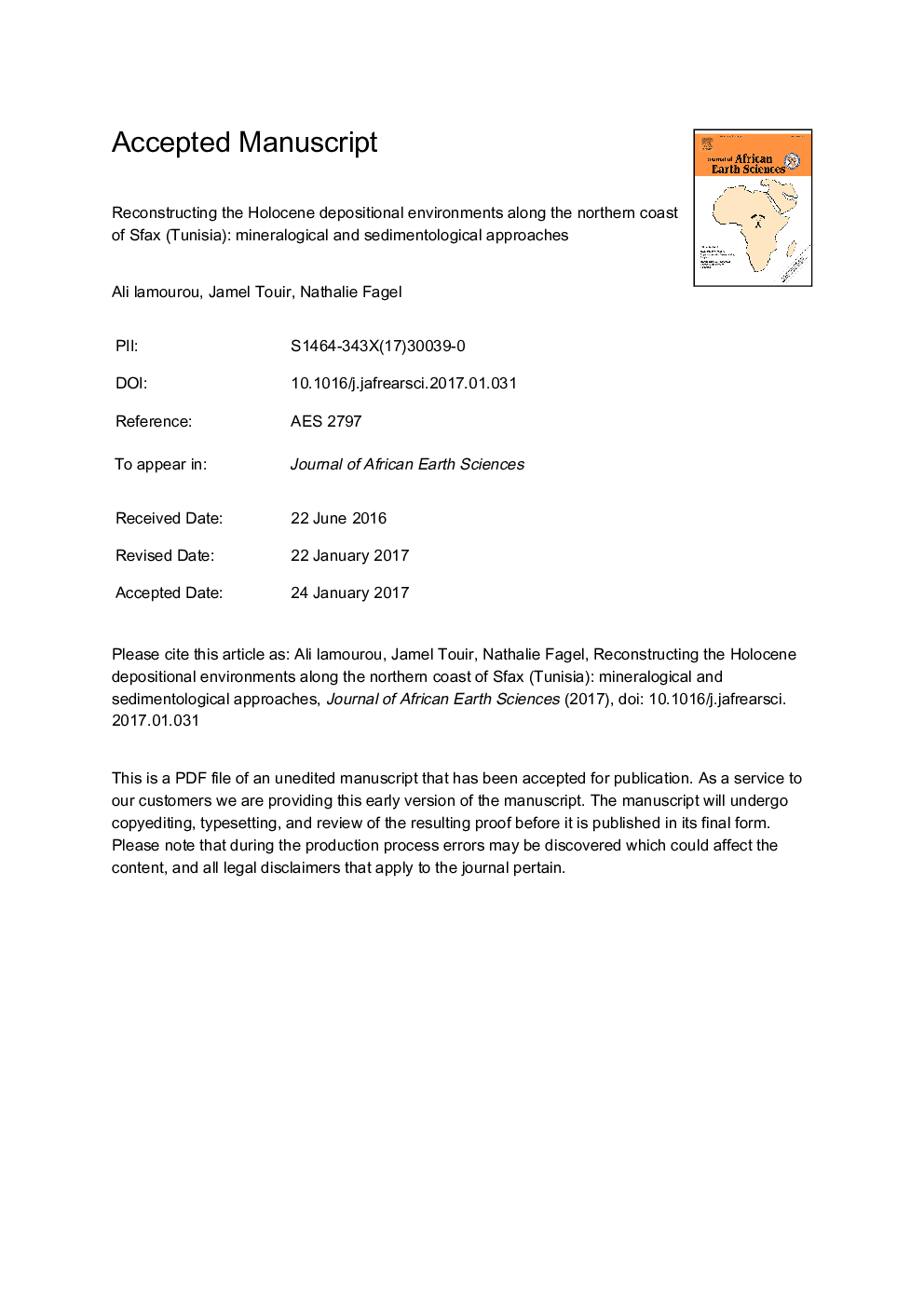| کد مقاله | کد نشریه | سال انتشار | مقاله انگلیسی | نسخه تمام متن |
|---|---|---|---|---|
| 5785728 | 1640179 | 2017 | 44 صفحه PDF | دانلود رایگان |
عنوان انگلیسی مقاله ISI
Reconstructing the Holocene depositional environments along the northern coast of Sfax (Tunisia): Mineralogical and sedimentological approaches
دانلود مقاله + سفارش ترجمه
دانلود مقاله ISI انگلیسی
رایگان برای ایرانیان
کلمات کلیدی
موضوعات مرتبط
مهندسی و علوم پایه
علوم زمین و سیارات
زمین شناسی
پیش نمایش صفحه اول مقاله

چکیده انگلیسی
A sedimentological and mineralogical study of sedimentary cores allowed reconstructing the evolution of depositional environments along the Northern coast of Sfax (Tunisia). The aim of this research work is to identify the factors controlling the sedimentation from the Holocene to the Present time. Three 30-m sediment cores collected by drilling at 30 m water depth were analyzed for their color, magnetic susceptibility signal, grain size by laser diffraction, organic matter content by loss of ignition, carbonate content by calcimetry and mineralogy by X-ray diffraction on bulk powder and clay <2 μm. They broadly present the same sedimentological and mineralogical features. Microscopical observations of petrographic slides allowed identifying six main sedimentary facies. Bulk mineralogical assemblages comprised clay minerals, quartz, calcite, gypsum and K-feldspars were examined. Considerable change was observed in the carbonate content that mimicked the bioclaste abundance and diluted the detrital minerals (clay minerals, quartz and feldspars). The gypsum mainly occurred in the lower sedimentary columns (SC12 and SC9) and in the upper/middle of core SC6. The clay fraction was made of a mixture of kaolinite, illite, smectite and palygorskite with no clear variation through core depth. Both grain-size parameters and magnetic susceptibility profile showed a sharp transition in the upper 2-5 m of the sedimentological columns. Coarse, sandy to gravely sediments characterized by a low magnetic susceptibility signal were replaced by fine bioclastic-rich clayey sediments. The analysis of vertical succession of depositional facies revealed a fluvial depositional environment (coastal plain) basically marked by fluvial channels and inundation plains at the bottom of all cores. However, core-top sediments recorded a littoral marine environment with sand depositions rich in gastropods, lamellibranches and algæ. Depositional facies, sedimentological and mineralogical parameters were consistent with a transition from a fluviatile depositional environment with some emersion phases marked by the gypsum precipitation, to a marine littoral environment. Such evolution was accompanied with a relative sea-level rise which flooded the fluvial system at the coastal plain during the Holocene, in agreement with sea-level fluctuations in southeast Tunisia during the Holocene.
ناشر
Database: Elsevier - ScienceDirect (ساینس دایرکت)
Journal: Journal of African Earth Sciences - Volume 129, May 2017, Pages 713-727
Journal: Journal of African Earth Sciences - Volume 129, May 2017, Pages 713-727
نویسندگان
Ali Lamourou, Jamel Touir, Nathalie Fagel,